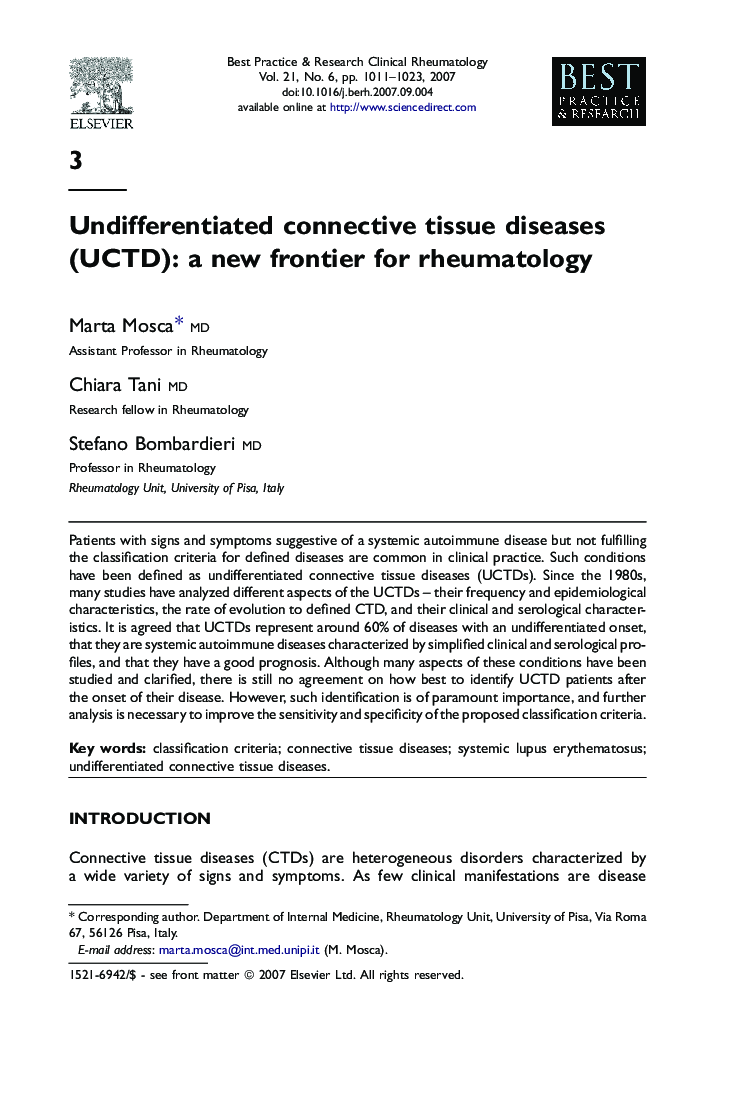| Article ID | Journal | Published Year | Pages | File Type |
|---|---|---|---|---|
| 3343430 | Best Practice & Research Clinical Rheumatology | 2007 | 13 Pages |
Patients with signs and symptoms suggestive of a systemic autoimmune disease but not fulfilling the classification criteria for defined diseases are common in clinical practice. Such conditions have been defined as undifferentiated connective tissue diseases (UCTDs). Since the 1980s, many studies have analyzed different aspects of the UCTDs – their frequency and epidemiological characteristics, the rate of evolution to defined CTD, and their clinical and serological characteristics. It is agreed that UCTDs represent around 60% of diseases with an undifferentiated onset, that they are systemic autoimmune diseases characterized by simplified clinical and serological profiles, and that they have a good prognosis. Although many aspects of these conditions have been studied and clarified, there is still no agreement on how best to identify UCTD patients after the onset of their disease. However, such identification is of paramount importance, and further analysis is necessary to improve the sensitivity and specificity of the proposed classification criteria.
